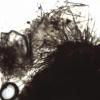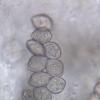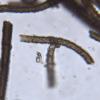
21-12-2025 09:32
Hello.A tiny ascomycete found embedded in wood in

21-12-2025 21:32
Pol DebaenstHello, Garden, Burgweg 19, Veurne, BelgiumOn 10/1

22-12-2025 23:38
Patrice TANCHAUDBonsoir, récolte sur un mur en pierre, apothéci

22-12-2025 00:47
Patrice TANCHAUDBonsoir, récolte à proximité du milieu dunaire

21-12-2025 21:40
Isabelle CharissouBonjour, j'aimerais connaitre les références de

20-12-2025 23:08
Patrice TANCHAUDBonsoir, récolte sur sol sablonneux dans l'arri�
Under a pile of grass clippings (grass and herbs) I found several conidiomata. Under the microscope I found no conidiphores only loose conidia and hyphae.
The hyphae are brown and thick-walled, smooth or sometimes also verruculose and septated. The conidia are citriform with conidial hila and following dimensions: Me = 13.1 × 10 µm ; Qe = 1.3. First hyaline later black.
Would this belong to the genus Cladosporium and can anyone determine the species?
After two weeks I found Rhopalomyces magnus on the substrate so probably among the rotten grass is also dung.
All help is welcome!
Best regards,
François Bartholomeeusen
Regards Przemek
thanks to your help and the literature I found, I think I choose: Chaetomium elatum.
The spore dimensions and description seem correct: "limoniform, biapiculate or umbonate, bilaterally flattened, brown when mature, with an apical germ pore".
The description of the terminal hairs is also correct : "verrucose or warty, brown, erect or flexuous in the lower part, 2.5-4.5 ?m diam. near the base, repeatedly and dichotomously branched at right to nearly straight angles in the upper part, with relatively flexible, flexuous or undulate terminal branches".
In the attached photo, near the septum, I see something that looks like a crozier!
Best regards and thanks again,
François





